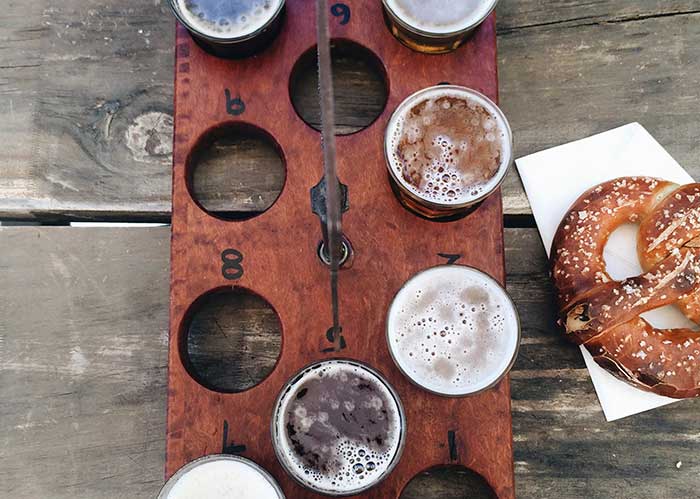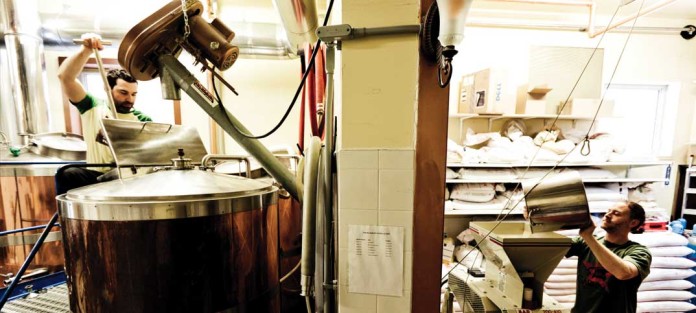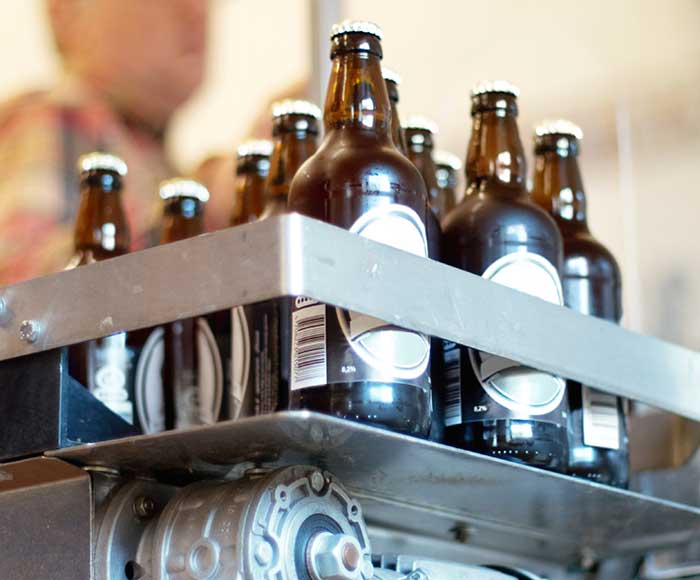The question ‘What is craft beer?’ is enough to make many alcohol experts squirm, yet that is what an ambitious group of craft brewers is attempting to answer.
With more than 500,000 new consumers drinking craft beer last year, Beavertown, Brewdog, Camden Town Brewery, James Clay and Magic Rock have united to form the United Craft Brewers (UCB), which they say will act in the interest of British craft brewers and attempt to expand their products’ reach to more consumers.
Sam Fielding, innovation director for Heineken, says: “Craft beer is not yet well defined at all from an industry standpoint or indeed a consumer standpoint. The best way to define a craft beer is by what it is not.”
The debate as to whether a craft beer or brewer can be owned by a multinational company is ongoing and alcohol wholesalers that are not already part of the discussion should get involved now. As consumer trends tilt further in favour of personalisation and experimentation, getting a profitable craft beer plan in place should form part of every alcohol specialist’s ‘to do’ list. According to Heineken, craft beers are not lagers produced on a mass scale, beer mix or flavoured beers, national brewers’ ales, or mass-produced stouts. But they do largely fall into two categories: traditional and modern. Traditional craft includes London Pride, Greene King, Theakston and Belhaven, while modern craft includes Meantime, Brewdog and Magic Rock, as well as modern imported craft beers such as Brooklyn Brewery and Blue Moon.
“You can charge a premium for products that have provenance but you need that footfall first”
Andrew Wild, joint managing director for Wilds Premier Drinks Distributor, says craft beer sales go against everything that his company has tried to achieve over the years.
“Normally, we would try to sell the right brand for the right outlet so that the brand sticks,” he says. “With craft beers, the customers talk consistently about ‘rotating’ brands regularly. The only way wholesalers can satisfy most customers is by grouping together with other wholesalers and sharing stock, which is what happens between the Today’s Group members.”
In September, Heineken acquired 50% of Lagunitas, the sixth-largest craft brewer in the US. The deal means that the California-based brewer will no longer be considered ‘craft’ in the US, as less than 25% of a craft brewer can be owned or controlled by a larger brewer, according to US Brewers Association guidelines.
Nevertheless, consumer perception is a powerful factor in beer and if drinkers believe that a brand can retain its heritage and provenance then craft beers can still command a high price in any country.

However, despite a meteoric rise in the past few years, craft beer still accounts for less than 1% of the beer market. The success of modern craft beer has been well documented in urban areas but the spread to other parts of the country has been slower. John Weaver, managing director for Tree of Life, says: “I’m very encouraged in London to see a proliferation of healthy retailing that includes craft beer. You can charge a premium for products that have provenance but you need that footfall first.”
One Scottish retailer who has that footfall is using Twitter to connect his new range of craft beers with the audience to which it appeals. Faisal Naseem of Arbroath Party Time says: “We’ve got a lot of competition in our area so we use our price, range and reputation to stand out. We’ve just got in some locally made craft beer for a point of difference and we’re promoting it on Twitter.”
Arbroath Party Time proud stockists of Bottle Cap Brewery range ! pic.twitter.com/gMZn9H4lLC
— Arbroath Party Time (@Arbroathparty) August 25, 2015
With a population of just less than 24,000, Arbroath is no Bristol or London so demand for craft there may indicate a tipping point as the UCB attempts to gain new ground.









